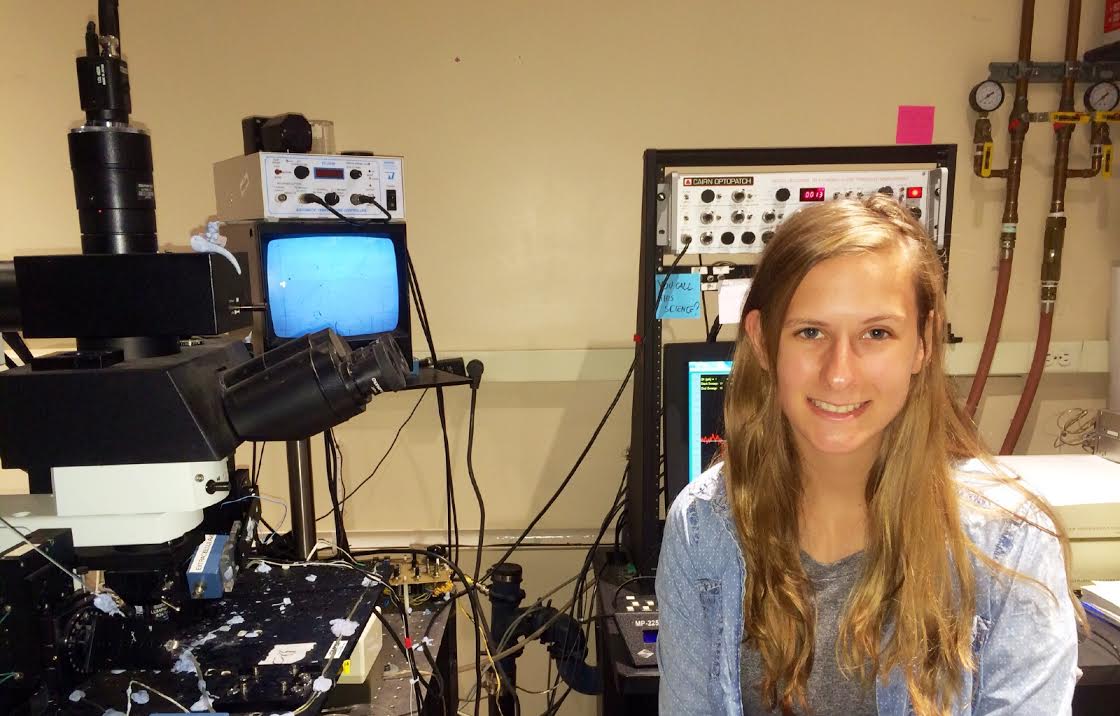
Hannah Staab ’17 is applying her academic focus in biology to an internship with Dr. Kamran Khodakhah’s lab at the Albert Einstein College of Medicine in the Bronx, NY, this summer. The AE College of Medicine is one of the premier research-intensive medical schools in the nation and is a longtime national leader in biomedical research.
Through her internship Staab is assisting Ilaria Carta, of the Dominick P. Purpura Department of Neuroscience, in Khodakhah’s lab researching the connection between the cerebellum and the VTA, two sections of the brain, and testing said connection’s implications on social behavior and its possible role in Autism Spectrum Disorders. Staab's internship is supported by the Summer Internship Support Fund, managed by Hamilton's Career and Life Outcomes Center.
This research is undertaken through optogenetics, or the process of instigating light-sensitive reactions in the brain, and at this stage mainly focuses on experimentation with mice. As well as tremendous potential for basic research, optogenetics has numerous potential applications to be explored through future study, including the mapping of the brain, gene therapy, the recovery of lost vision, and treatment of epilepsy and Parkinson’s disease.
A biology major, Staab said that she was primarily interested in this internship in order to experience work in a laboratory-setting, in anticipation of a potential future in lab research. “I also love biology,” she added, “so this has been a great way to apply all of my knowledge from biology classes at Hamilton to real research, and learn a lot of new lab techniques and skills.”
Staab’s responsibilities in Khodakhah’s lab include helping run behavioral experiments on the subject mice, making fiber optics that will later be implanted into the mice’s brains, analyzing data, creating presentations for lab meetings, observing Carta perform survival surgeries on the mice, and attending lectures hosted by the Albert Einstein College’s faculty.
Staab cited a number of benefits to her experience this summer, from helping illuminate her future career path to diversifying her skill set. “Working in this lab has definitely made me want to pursue a future in lab research, and confirmed my decision to try to go to graduate school after Hamilton,” she said. “By helping with one research project, and getting to hear about so many others, I have learned a lot about experimental design as well as how to accurately present research and data.”
Staab also said that the chance to attend lectures hosted by the college has allowed her to learn “in detail” about a large number of previously foreign topics in a highly professional setting. She concluded by expressing her enthusiasm for the growing field of optogenetics, as well the prospect of pursuing a research project in biology of her own design after graduation.

